Welcome to the world of Jade Plant care, where you can discover the secrets to keeping your Jade Plant happy and healthy in cool indoor spaces. With proper Jade Plant indoor care, you can enjoy the beauty of these low-maintenance plants all year round. Growing Jade Plants indoors is easier than you think, and with the right tips and tricks, you can become a successful plant parent.
Whether you’re a seasoned plant enthusiast or just starting out, this guide will walk you through the ins and outs of Jade Plant care, from understanding the plant itself to troubleshooting common issues. By following our expert advice on Growing Jade Plants indoors, you’ll be well on your way to creating a thriving and beautiful indoor space.
Key Takeaways
- Learn the basics of Jade Plant indoor care to keep your plant happy and healthy
- Discover the benefits of Growing Jade Plants indoors, including air purification and aesthetic appeal
- Understand the importance of proper lighting, temperature, and watering for your Jade Plant
- Get tips on how to troubleshoot common issues and keep your Jade Plant thriving
- Find out how to create a beautiful and low-maintenance indoor space with Jade Plants
Understanding the Jade Plant: An Overview
Jade Plants, also known as Crassula ovata, are a type of succulent that originates from South Africa. They are known for their small, rounded leaves and ability to thrive in cool, low-light conditions, making them perfect for indoor spaces. As one of the most popular succulents for cool climates, Jade Plants are a great choice for those who want to bring some greenery into their homes.
When it comes to low-light succulents, Jade Plants are one of the best options. They can survive in conditions with limited natural light, making them ideal for rooms with few windows or for people who tend to forget to water their plants. With proper care, Jade Plants can grow into beautiful, lush plants that can be enjoyed for years to come.
What is a Jade Plant?
A Jade Plant is a type of succulent that is known for its small, rounded leaves and thick, woody stems. They are relatively small, making them a great choice for indoor spaces, and can be easily propagated to create new plants.
Unique Characteristics of Jade Plants
Jade Plants have several unique characteristics that make them stand out from other succulents. Some of these characteristics include:
- Small, rounded leaves that are a deep green color
- Thick, woody stems that can grow up to 3 feet tall
- Ability to thrive in cool, low-light conditions
- Low watering requirements, making them a great choice for busy people
Common Varieties of Jade Plants
There are several common varieties of Jade Plants, including the ‘Tricolor’ and ‘Hummel’s Sunset’. Each variety has its own unique characteristics, such as different leaf colors or shapes, and can add some visual interest to your indoor space.
| Variety | Description |
|---|---|
| Tricolor | A variety of Jade Plant with leaves that have a mix of green, white, and pink colors |
| Hummel’s Sunset | A variety of Jade Plant with leaves that have a golden, sunset-like color |
Ideal Growing Conditions for Jade Plants
Jade Plants are known for their adaptability, but they still have specific preferences when it comes to growing conditions. To ensure your Jade Plant thrives, it’s essential to understand its needs. One crucial aspect is lighting. Jade Plants can tolerate a range of light conditions, from low to bright, indirect light. However, direct sunlight can be too intense, especially in warmer climates, so some shade is necessary.
When considering the Crassula ovata sunlight needs, it’s clear that these plants can thrive in various lighting conditions. In fact, they are often classified as Low-light succulents, making them perfect for indoor spaces with limited natural light. To provide the best conditions, place your Jade Plant near a window with a sheer curtain to filter the sunlight.
In terms of temperature, Jade Plants prefer daytime temperatures between 65-75°F (18-24°C) and slightly cooler nights. Humidity is not a significant concern, as Jade Plants are succulents and can tolerate average indoor humidity levels. By understanding these conditions, you can place your Jade Plant in the perfect spot in your home.
Light Requirements
- Low to bright, indirect light
- Direct sunlight can be too intense, especially in warmer climates
- Some shade is necessary, especially during peak sun hours
Temperature Preferences
- Daytime temperatures: 65-75°F (18-24°C)
- Nighttime temperatures: slightly cooler than daytime temperatures
Humidity Needs
Jade Plants can tolerate average indoor humidity levels, making them a great choice for indoor spaces.
| Condition | Preference |
|---|---|
| Lighting | Low to bright, indirect light |
| Temperature | 65-75°F (18-24°C) during the day, slightly cooler at night |
| Humidity | Average indoor humidity levels |
Watering Your Jade Plant Effectively
Watering is a crucial aspect of Jade Plant care, as it directly affects the plant’s health and longevity. A well-planned Jade Plant watering schedule can make all the difference in preventing issues like root rot and leaf shriveling.
To determine the right Jade Plant watering schedule, it’s essential to consider the plant’s needs. Check the soil moisture by sticking your finger into the soil up to the first knuckle. If the soil feels dry, it’s time to water. Water thoroughly, making sure the pot drains well to prevent waterlogged soil.
Signs of Overwatering vs. Underwatering
It’s crucial to recognize the signs of overwatering and underwatering to adjust your Jade Plant watering schedule accordingly. Some common signs include:
- Yellowing leaves: a sign of overwatering
- Shriveled leaves: a sign of underwatering
- Soft, mushy stems: a sign of root rot due to overwatering
By being mindful of these signs and adjusting your Jade Plant watering schedule, you can ensure your plant stays healthy and thrives.
Best Practices for Watering
To create an effective Jade Plant watering schedule, follow these best practices:
- Water your Jade Plant when the soil feels dry to the touch
- Water thoroughly, making sure the pot drains well
- Adjust your watering schedule according to the season, watering more sparingly in the winter months
By following these tips and creating a well-planned Jade Plant watering schedule, you can help your plant thrive and enjoy its many benefits.
Soil and Potting Tips for Jade Plants
To keep your Jade Plant thriving, it’s essential to use the right Jade Plant soil mix. This type of soil is specifically designed to prevent water from accumulating in the soil, reducing the risk of root rot. When selecting a pot, choose one that is slightly larger than the plant’s root system and has good drainage holes. This will ensure that your Jade Plant has enough room to grow and that excess water can escape.
A good Jade Plant soil mix should contain a combination of organic and inorganic materials, such as peat moss, compost, perlite, and vermiculite. These ingredients will provide your Jade Plant with the necessary nutrients for healthy growth. For more information on how to choose the right potting mix, visit this guide to learn more about the importance of soil selection for healthy houseplants.
Some key characteristics of a good Jade Plant soil mix include:
- Good drainage to prevent waterlogged soil
- A balanced pH level to support healthy growth
- A mix of organic and inorganic materials to provide essential nutrients
By using the right Jade Plant soil mix and pot, you can help your plant thrive and enjoy its beautiful, low-maintenance foliage. Remember to repot your Jade Plant every 2-3 years to give it fresh soil and a larger pot if necessary. With the right care and attention, your Jade Plant can become a stunning and long-lasting addition to your indoor space.
Fertilizing Jade Plants: When and How
To ensure your Jade Plant thrives, fertilization is a crucial step. During the growing season, which typically spans from spring to summer, use a balanced, water-soluble fertilizer. It’s essential to dilute the fertilizer to half the recommended strength to avoid burning the roots of your Jade Plant.
Feeding your Jade Plant once a month is a good rule of thumb, but remember to skip the winter months when the plant is dormant. Recognizing nutrient deficiencies is also vital, as signs such as yellowing leaves or weak growth can indicate a need to adjust your fertilization schedule. Some key points to consider when fertilizing your Jade Plant include:
- Using a fertilizer that is specifically formulated for succulents or cacti
- Avoiding overfertilization, which can damage the roots and lead to other problems
- Monitoring your plant’s response to fertilization and adjusting as needed
By following these guidelines and being mindful of your Jade Plant’s unique needs, you can help it grow strong and healthy.
Types of Fertilizers to Use
When it comes to choosing a fertilizer for your Jade Plant, there are several options available. Look for a balanced, water-soluble fertilizer that contains equal amounts of nitrogen, phosphorus, and potassium. Some popular brands include Miracle-Gro and Schultz.
Frequency of Fertilization
As mentioned earlier, fertilizing your Jade Plant once a month during the growing season is a good rule of thumb. However, this may vary depending on the specific needs of your plant. Be sure to monitor your plant’s response to fertilization and adjust as needed.
Recognizing Nutrient Deficiencies
Nutrient deficiencies can be a common problem in Jade Plants, but recognizing the signs can help you take action. Keep an eye out for yellowing leaves, weak growth, or other unusual symptoms, and adjust your fertilization schedule accordingly.
Common Pests and Problems in Jade Plants
Jade plants, like any other plant, can be susceptible to pests and diseases. Regular inspection is key to maintaining the health of your jade plant. By checking your plant frequently, you can catch any potential issues early on, preventing them from becoming major problems.
Some common pests that can infest jade plants include mealybugs, spider mites, and scale. These pests can cause damage to the plant, leading to issues such as yellowing leaves or stunted growth. To prevent infestations, it’s essential to maintain good hygiene and provide good air circulation around your plant. You can learn more about reviving a dying houseplant and preventing common problems.
Root rot is another common issue that can affect jade plants, often caused by overwatering. If you notice soft, mushy stems or leaves, it may be a sign of root rot. To prevent this, make sure not to overwater your plant and ensure that the pot has good drainage. Here are some tips to help you prevent common problems:
- Water your jade plant sparingly, allowing the soil to dry out between waterings
- Provide good air circulation around your plant to prevent fungal diseases
- Inspect your plant regularly for signs of pests or diseases
By following these tips and being mindful of the common pests and problems that can affect jade plants, you can help keep your plant healthy and thriving.
| Pest/Disease | Symptoms | Prevention |
|---|---|---|
| Mealybugs | White, cottony patches on leaves and stems | Isolate infected plants, treat with insecticidal soap |
| Root Rot | Soft, mushy stems or leaves | Avoid overwatering, improve drainage |
Pruning and Propagating Jade Plants
Pruning is an essential part of Jade Plant care, as it helps maintain the plant’s shape, promotes healthy growth, and encourages branching. To prune your Jade Plant, use clean, sharp tools to prevent spreading diseases. The best time to prune is during the growing season, when the plant is most active. This is also an ideal time to learn about Jade Plant propagation techniques, which can be used to share your plant with friends or create new plants for yourself.
When it comes to Jade Plant propagation techniques, there are a few methods to choose from. You can propagate Jade Plants through leaf or stem cuttings. To do this, simply allow the cut ends to dry for a few days to form a callus, then plant them in well-draining soil. For more information on how to care for and propagate a Crassula ovata Jade Plant, you can visit talkingofplants.com and learn about the best practices for Jade Plant care.
Techniques for Proper Pruning
Proper pruning techniques are crucial for maintaining the health and appearance of your Jade Plant. Here are a few tips to keep in mind:
- Use clean, sharp tools to prevent spreading diseases
- Prune during the growing season, when the plant is most active
- Remove any dead or damaged leaves or stems
How to Propagate Jade Plants
Propagating Jade Plants is a great way to share your plant with friends or create new plants for yourself. To propagate Jade Plants, follow these steps:
- Take leaf or stem cuttings from your Jade Plant
- Allow the cut ends to dry for a few days to form a callus
- Plant the cuttings in well-draining soil
Seasonal Care for Jade Plants
Jade Plants require attention to thrive in different seasons. As the seasons change, it’s essential to adjust your care routine to ensure your plant remains healthy and happy.
Preparing for Winter
In the winter, Jade Plants are dormant, and their water needs decrease. Reduce watering to once every 4-6 weeks, and keep the plant in a cooler spot, around 55-65°F (13-18°C), to encourage dormancy.
Summer Care Tips
In the summer, increase watering and fertilization to support active growth. Be mindful of indoor climate changes, such as those caused by heating or air conditioning, and adjust your care routine accordingly.
Adjusting for Indoor Climate Changes
Indoor climate changes can affect your Jade Plant’s health. To adjust, consider the following tips:
- Monitor temperature fluctuations
- Adjust watering and fertilization accordingly
- Provide adequate humidity
Troubleshooting Jade Plant Issues
Even with proper care, Jade Plants can still experience issues. It’s essential to monitor your plant’s health closely to catch any problems early on. Common issues include overwatering, underwatering, and pest infestations, which can cause droopy leaves, soft stems, or white, cottony patches.
When troubleshooting, it’s crucial to identify the root cause of the problem. Check your plant’s soil moisture by sticking your finger into the soil up to the first knuckle. If the soil feels dry, it’s time to water. If it’s already moist, wait a few more days before watering again.
Common Problems and Solutions
- Overwatering: Allow the soil to dry out completely between waterings.
- Underwatering: Increase the frequency of waterings, but make sure not to overwater.
- Pest infestations: Isolate the plant, and treat it with insecticidal soap or neem oil.
If you’re unsure about how to address an issue, don’t hesitate to seek advice from a gardening expert or take your plant to a local nursery for professional help. Remember,
prevention is key
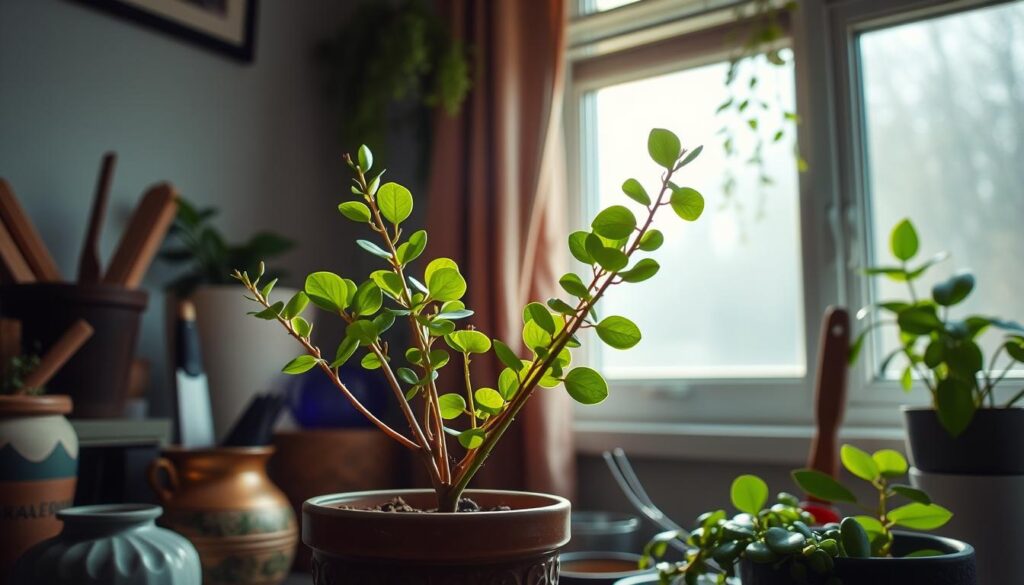
Monitoring Plant Health
Regularly inspect your plant for signs of trouble, such as yellowing leaves, black spots, or a soft, mushy stem. By catching issues early, you can take action to prevent further damage and keep your Jade Plant thriving.
Benefits of Having Jade Plants Indoors
Jade plants are not just captivating houseplants, but they also offer a range of benefits that can enhance your indoor environment. Beyond their striking visual appeal, these hardy succulents act as natural air purifiers, removing toxins and improving the quality of the air you breathe. Whether placed on a desk, shelf, or coffee table, jade plants effortlessly blend form and function, adding a touch of elegance and tranquility to any space.
In many cultures, jade plants are revered as symbols of good luck and prosperity, making them a thoughtful addition to homes and offices. Their compact growth and diverse varieties allow you to find the perfect fit for your décor, from compact tabletop versions to larger, statement-making specimens. With their low-maintenance needs and ability to thrive in a variety of indoor conditions, jade plants are the ideal choice for busy individuals seeking to bring a touch of nature into their lives.
As you continue your journey with jade plant care, remember that these resilient beauties can reward you with years of vibrant growth and a heightened sense of well-being in your living or working space. Embrace the calming presence and purifying powers of the jade plant, and let it become a cherished part of your indoor oasis.


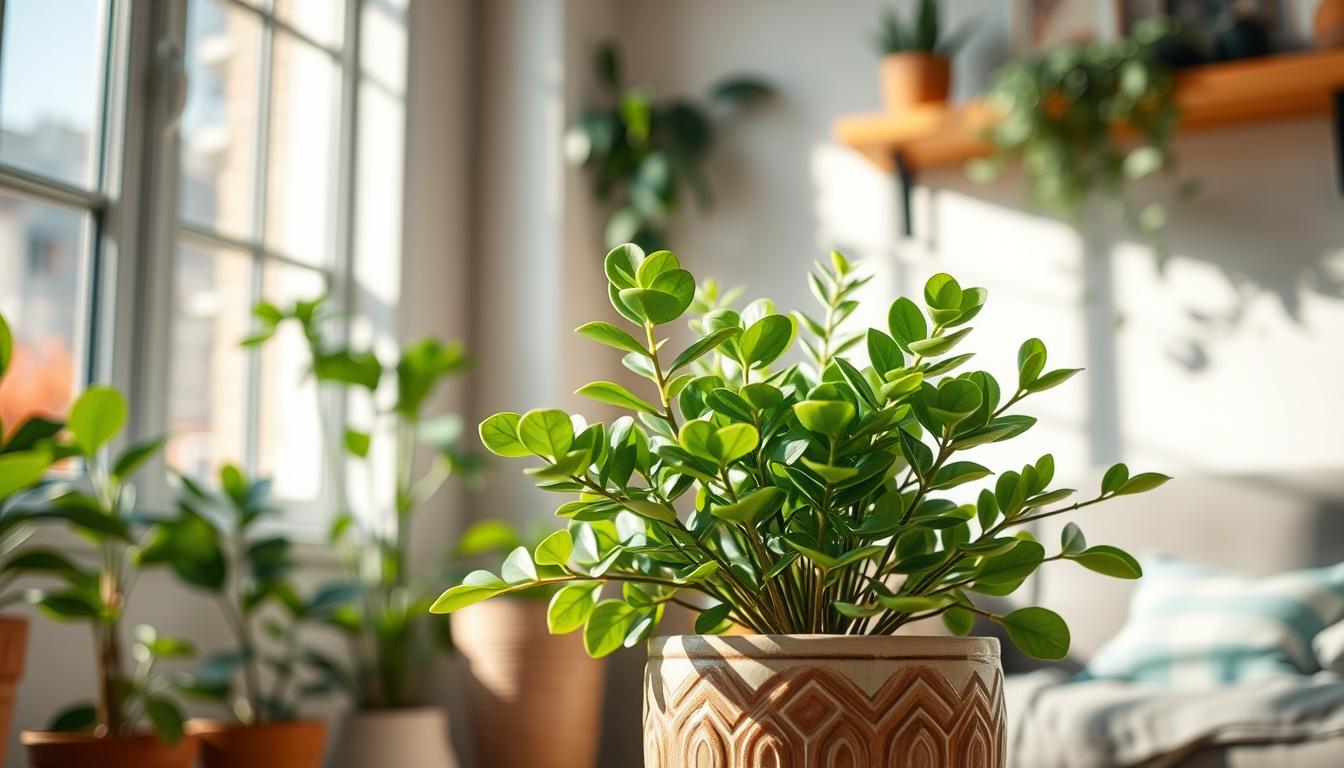
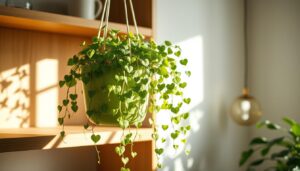
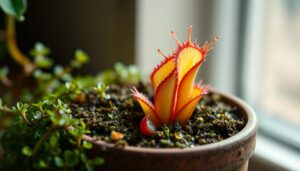
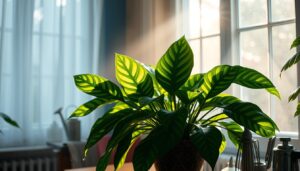
Pingback: Essential Tools and Techniques for Successful Herb Propagation
Pingback: 10 Best Air-Purifying Houseplants for a Healthier Home - Trusted House Plant Guide
Pingback: Seasons of Growth: Adapting Your Indoor Plant Care for Each Season - Trusted House Plant Guide
Pingback: 10 Best Low-Light Houseplants for a Lush Indoor Oasis - Trusted House Plant Guide
Pingback: DIY Hanging Planters for Indoor Spaces: Transform Your Home with Creative Designs - Trusted House Plant Guide
Pingback: 12 Best Houseplants for Beginners to Brighten Your Home - Trusted House Plant Guide
Pingback: The Hottest Houseplant of 2025: A Stunning Variety You Need to See - Trusted House Plant Guide
Pingback: The Ultimate Beginner's Guide to the Most Wanted Indoor Plant for 2025 - Trusted House Plant Guide
Pingback: The Ultimate Guide to Houseplants: 100 Best Indoor Plants for Every Home - Trusted House Plant Guide
Pingback: 10 Stunning Large Indoor Plants for Statement Decor - Trusted House Plant Guide
Pingback: 8 Best Pet-Friendly Houseplants for a Happy Home - Trusted House Plant Guide
Pingback: 10 Perfect Small Houseplants for Compact Spaces - Trusted House Plant Guide
Pingback: 12 Stunning Indoor Succulents and Cacti for Your Home - Trusted House Plant Guide
Pingback: 8 Stunning Flowering Indoor Plants to Brighten Your Home - Trusted House Plant Guide
Pingback: "What Are the Best Low Light Indoor Plants? Discover 10 Perfect Varieties. - Trusted House Plant Guide
Pingback: Best Flowering Houseplants: Beautify Your Home - Trusted House Plant Guide
Pingback: 10 Gorgeous Houseplants That Thrive in Humidity - Trusted House Plant Guide
Pingback: Non-Toxic Herbs for Indoor Gardens with Pets - Trusted House Plant Guide
Pingback: 5. How to Water Indoor Herbs: A Complete Guide - Trusted House Plant Guide
Pingback: How to Prune and Harvest Indoor Herbs for Maximum Yield - Trusted House Plant Guide